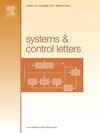制度转换引发的股价冲击下的最优均值方差投资组合选择
IF 2.5
3区 计算机科学
Q3 AUTOMATION & CONTROL SYSTEMS
引用次数: 0
摘要
本文研究了制度切换金融模型中具有跳跃的均值-方差(MV)投资组合选择问题。我们方法的新颖之处在于,不仅允许市场参数(如利率、升值率、波动性和跳跃强度)取决于市场机制,而且还允许股票价格在市场机制转换时经历跳跃,除了通常的微观层面的跳跃。这种建模选择是由经验观察得出的,即当市场从“看涨”转向“看跌”时,股价往往会出现大幅下跌,反之亦然。利用平方补齐技术,导出了最优投资组合策略和有效边界,两者都具有三维常微分方程的特征。其中,两个系统是线性的,而第一个系统是一个l维的,完全耦合的,高度非线性的Riccati方程。在没有制度转换引起的股票价格冲击的情况下,这些系统简化为简单的线性ode。因此,引入制度转换引起的股价冲击增加了我们模型的复杂性和挑战。此外,我们还研究了无短路约束下的MV问题。在这种情况下,相应的Riccati方程变成了一个2l维的,完全耦合的,非线性ODE,我们建立了它的可解性。然后用该解明确表示最优投资组合和有效边界。本文章由计算机程序翻译,如有差异,请以英文原文为准。
Optimal mean–variance portfolio selection under regime-switching-induced stock price shocks
In this paper, we investigate mean-variance (MV) portfolio selection problems with jumps in a regime-switching financial model. The novelty of our approach lies in allowing not only the market parameters — such as the interest rate, appreciation rate, volatility, and jump intensity — to depend on the market regime, but also in permitting stock prices to experience jumps when the market regime switches, in addition to the usual micro-level jumps. This modeling choice is motivated by empirical observations that stock prices often exhibit sharp declines when the market shifts from a “bullish” to a “bearish” regime, and vice versa. By employing the completion-of-squares technique, we derive the optimal portfolio strategy and the efficient frontier, both of which are characterized by three systems of multi-dimensional ordinary differential equations (ODEs). Among these, two systems are linear, while the first one is an -dimensional, fully coupled, and highly nonlinear Riccati equation. In the absence of regime-switching-induced stock price shocks, these systems reduce to simple linear ODEs. Thus, the introduction of regime-switching-induced stock price shocks adds significant complexity and challenges to our model. Additionally, we explore the MV problem under a no-shorting constraint. In this case, the corresponding Riccati equation becomes a -dimensional, fully coupled, nonlinear ODE, for which we establish solvability. The solution is then used to explicitly express the optimal portfolio and the efficient frontier.
求助全文
通过发布文献求助,成功后即可免费获取论文全文。
去求助
来源期刊

Systems & Control Letters
工程技术-运筹学与管理科学
CiteScore
4.60
自引率
3.80%
发文量
144
审稿时长
6 months
期刊介绍:
Founded in 1981 by two of the pre-eminent control theorists, Roger Brockett and Jan Willems, Systems & Control Letters is one of the leading journals in the field of control theory. The aim of the journal is to allow dissemination of relatively concise but highly original contributions whose high initial quality enables a relatively rapid review process. All aspects of the fields of systems and control are covered, especially mathematically-oriented and theoretical papers that have a clear relevance to engineering, physical and biological sciences, and even economics. Application-oriented papers with sophisticated and rigorous mathematical elements are also welcome.
 求助内容:
求助内容: 应助结果提醒方式:
应助结果提醒方式:


